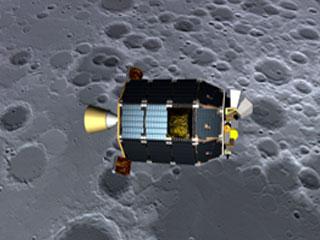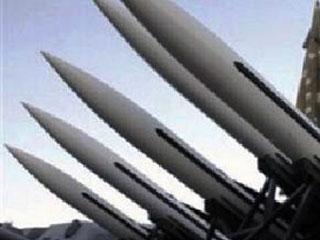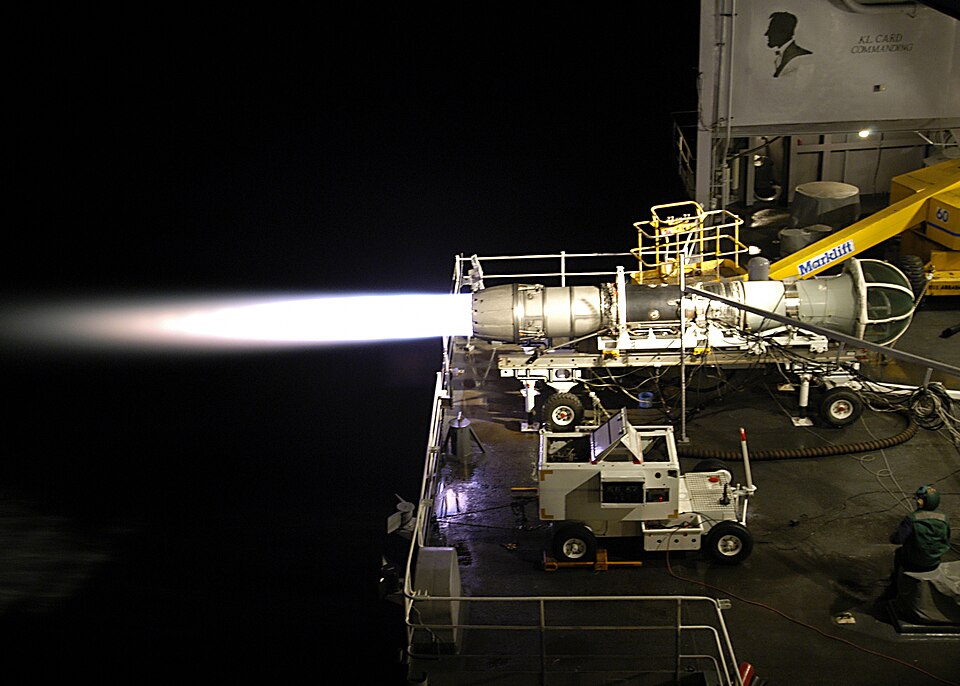
An artist's concept of NASA's Lunar Atmosphere and Dust Environment Explorer (LADEE) spacecraft seen orbiting near the surface of the moon. Photo: NASA Ames/Dana Berry.
WASHINGTON (PTI): NASA's LADEE Moon probe crashed into the lunar surface at 5,800 km per hour - three times the speed of a high-powered rifle bullet - as the spacecraft closed its six-month mission, the US space agency said.
The Lunar Atmosphere and Dust Environment Explorer (LADEE) lacked fuel to maintain a long-term lunar orbit or continue science operations and was intentionally sent into the lunar surface last week.
The spacecraft's orbit naturally decayed following the mission's final low-altitude science phase, NASA said.
During impact, engineers believe the LADEE spacecraft, the size of a vending machine, broke apart, with most of the spacecraft's material heating up several hundred degrees or even vaporising at the surface.
Any material that remained is likely buried in shallow craters.
"At the time of impact, LADEE was travelling at a speed of 3,600 miles per hour (5794 km/hr) - about three times the speed of a high-powered rifle bullet," said Rick Elphic, LADEE project scientist at Ames.
"There's nothing gentle about impact at these speeds, it's just a question of whether LADEE made a localised craterlet on a hillside or scattered debris across a flat area. It will be interesting to see what kind of feature LADEE has created," said Elphic.
In early April, the spacecraft was commanded to carry out manoeuvres that would lower its closest approach to the lunar surface.
The new orbit brought LADEE to altitudes below two kilometres above the lunar surface. This is lower than most commercial airliners fly above Earth, enabling scientists to gather unprecedented science measurements.
On April 11, LADEE performed a final manoeuvre to ensure a trajectory that caused the spacecraft to impact the far side of the Moon, which is not in view of Earth or near any previous lunar mission landings.
LADEE also survived the total lunar eclipse on April 14 to 15. This demonstrated the spacecraft's ability to endure low temperatures and a drain on batteries as it, and the moon, passed through Earth's deep shadow.
In the coming months, mission controllers will determine the exact time and location of LADEE's impact and work with the agency's Lunar Reconnaissance Orbiter (LRO) team to possibly capture an image of the impact site.
Launched in September 2013 from NASA's Wallops Flight Facility in Virginia, LADEE began orbiting the Moon October 6 and gathering science data November 10.
LADEE also hosted NASA's first dedicated system for two-way communication using laser instead of radio waves.
The Lunar Laser Communication Demonstration (LLCD) made history using a pulsed laser beam to transmit data over the 384,633km from the Moon to the Earth at a record-breaking download rate of 622 megabits-per-second (Mbps).
 Previous Article
Previous Article Next Article
Next Article












The Indian Air Force, in its flight trials evaluation report submitted before the Defence Ministry l..
view articleAn insight into the Medium Multi-Role Combat Aircraft competition...
view articleSky enthusiasts can now spot the International Space Station (ISS) commanded by Indian-American astr..
view article